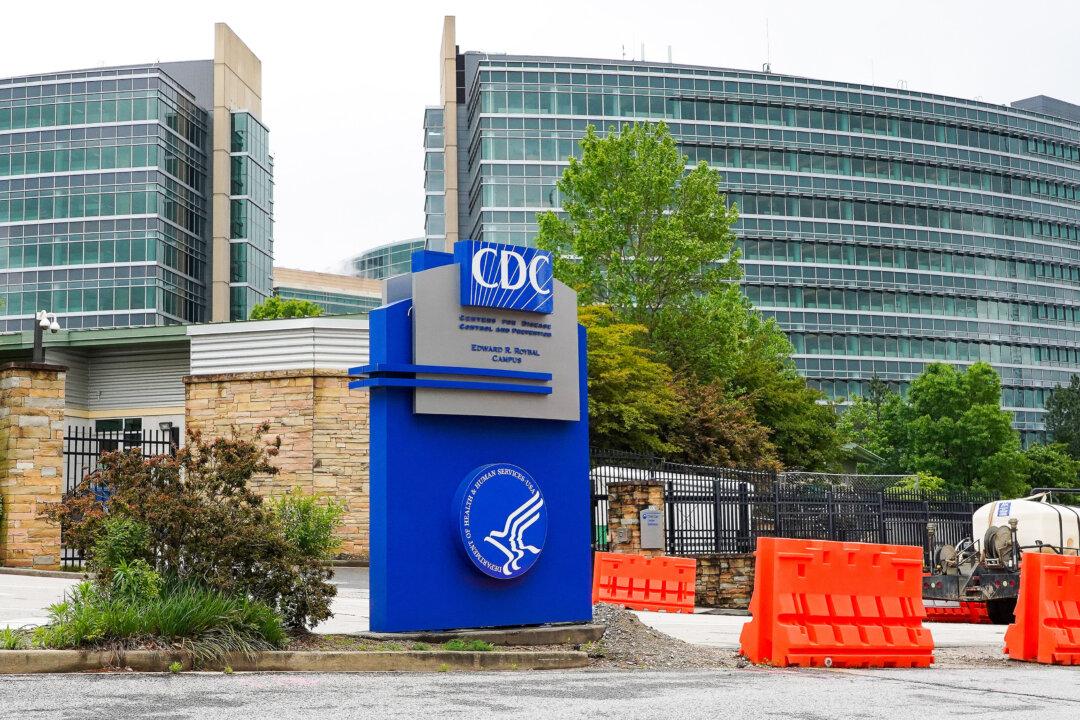The U.S. Centers for Disease Control and Prevention (CDC) said that 2023 saw an overall decline in drug overdose deaths across the United States but still described the totals as “staggering,” according to a recent report.
Data from the CDC shows there were an estimated 107,543 drug overdose deaths in the United States last year, representing a 3 percent decrease from 111,029 deaths reported in 2022.
“This is the first annual decrease in drug overdose deaths since 2018,” the federal health agency said last week.
Opioid overdose deaths declined from about 84,181 in 2022 to 81,083 in 2023, according to the CDC’s data, which factors in synthetic opioids such as fentanyl. However, there has been a 2023 increase in overdose deaths caused by cocaine, methamphetamine, and similar stimulants, it said.
Maine, Indiana, Kansas, and Nebraska saw overdose deaths drop by 15 percent or more, the CDC said, adding that Oregon, Washington state, and Alaska saw increases in similar deaths. Oregon, notably, saw a 27 percent increase last year as compared with 2022’s figures, according to the agency.
“Today’s data showing a decrease in drug overdoses over the 12-month period through December 2023 is heartening news for our nation and demonstrates we are making progress to prevent deaths from drug overdoses,” CDC Chief Medical Officer Deb Houry said in a statement issued last week alongside the release of the latest data. “However, this does not mean we have accomplished our mission. The data show we still lost over 100,000 people last year.”
It means, she added, that “there are still families and friends losing their loved ones to drug overdoses at staggering numbers.”
Over the last two decades, the number of U.S. overdose deaths has risen almost every year and continued to break annual records—making it the worst overdose epidemic in American history.
U.S. health officials say that fentanyl is continuing to pose a threat to U.S. communities.
“Fentanyl has continued to infiltrate the drug supply in communities across the United States and it is a very dangerous time to use drugs, even just occasionally,” Nora Volkow, director of the National Institute on Drug Abuse, said in a statement last week.
Some illegal pills are manufactured to look similar to legitimate prescription pills, she warned, but they “can actually contain fentanyl,” which officials have blamed for the rash in U.S. overdose deaths in recent years.
“It is urgently important that people know that any pills given to someone by a friend, purchased on social media, or received from any source other than a pharmacy could be potentially deadly---even after a single ingestion,” Ms. Volkow said.
Earlier this month, the Drug Enforcement Administration (DEA) released a report saying there is now a “higher average purity in pills containing fentanyl” that’s being smuggled into the United States by Mexican cartels.
“In 2022, the average fentanyl pill contained 2.4 milligrams (mg) of fentanyl, ranging from a low of .03 mg to a high of 9 mg,” the agency wrote in its 2024 National Drug Threat Assessment, noting that a lethal dose is about 2 milligrams.
The two prominent cartels involved in the fentanyl trade—the Sinaloa and Jalisco criminal syndicates—are the entities responsible for bringing the drug into the United States. Those groups manufacture the drug with chemicals that are sourced from China, the DEA noted.
“These two Cartels are global criminal enterprises that have developed global supply chain networks. They rely on chemical companies and pill press companies in China to supply the precursor chemicals and pill presses needed to manufacture the drugs,” DEA Administrator Anne Milgram said in a statement released earlier in May.
In March, the White House announced that it would launch a new effort to deal with the U.S. overdose epidemic, issuing a “nationwide call-to-action to stakeholders” to provide more access to opioid-reversal drugs like naloxone, more commonly known as Narcan.







